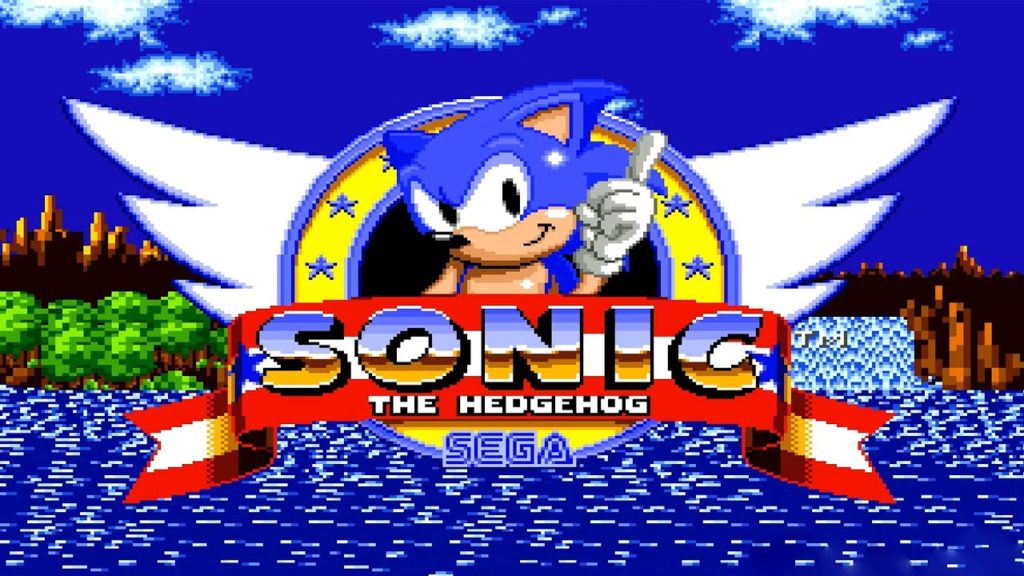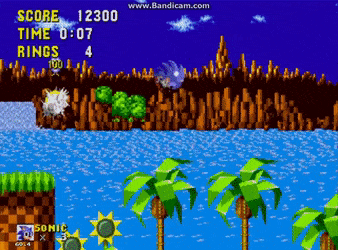The original Sonic the Hedgehog, released in 1991, is a platform video game published by Sega for the Sega Genesis. This game and its iconic blue protagonist lie at the center of the 1991 Sega v Nintendo console war and are best known for one thing: speed. In 1990, Nintendo vastly outcompeted Sega sales in America for their new 16-bit home consoles, the Nintendo Entertainment System (NES) and the Sega Genesis, respectively. To reattain their grip on the American video game market, Sega devised a plan. This plan involved creating a game that would rival the popularity of Super Mario Bros. in America. With much planning and revision, they captured our hearts and our wallets with someone we all know and love, Sonic the Hedgehog.

With the pressure of the entire American market on his shoulders, Sonic had no other option but to bring something new to the table. Sega designers Naoto Ohshima and Yuji Naka shared the opinion that the platformer games of the time sometimes felt slow, and desired something faster. Thus, when the duo pitched project “Defeat Mario” to Sega in its time of need, they presented a working game sample with an algorithm that allowed a sprite to move smoothly and quickly along a curve. This new game tech was essential in allowing Ohshima to achieve his goal of making “a game where the character dashed at incredible speed with the terrain scrolling smoothly by you—an experience so intense that if you played it once, all other games would feel unplayably slow and clunky by comparison!” Upon the game’s release in 1991, the world’s fastest hedgehog took the American game market by storm with its flashy graphics, diverse gameplay, and impressive animation.
In playtests of the game, players were allowed to slowly learn the terrain before zooming off; the thing is though, they didn’t seem to want to! The playtesters usually opted to go full-speed from the very beginning, revealing the market’s own need for speed. Realizing this, the design team then implemented the ring-collecting system.This allowed players to play recklessly and simply scatter their coins, rather than lose an entire life.
With the kind of speed that Sega’s Sonic the Hedgehog introduced to platform games, a new standard would be set for what made an “exciting” game. The heavy emphasis placed on Sonic’s speed as a unique new element of gameplay influenced the conflation of excitement and speed in action games. Of course, with the rapid advancement of technology in the past few decades, this was bound to happen, even if not so overt. Sonic just happened to be particularly on the nose with this trend.
Reflecting on the current day, we’ve reached a point where life moves with incredible rapidity. In such a fast-paced world, it’s very easy to become accustomed to a state of restlessness. When we feel the pressure to be constantly producing or distracted, it can be easy to lose sight of the things that ground us. As the pinnacle of speed, Sonic has something to teach us about living the fast life.
Whether running, rolling, flying, or swimming, Sonic’s path is always lined with gold rings. Collecting 100 rings affords the player with an extra life and, more importantly, the possession of any amount of rings protects the hedgehog from losing a life. The message here is, first of all, that we don’t need to go after every opportunity that presents itself. We don’t need to grasp at every ring in our path, it’s enough just to have what you need. Second of all, Sonic teaches us about resilience. As long as the player has even one ring, they will be protected from what would be a lethal blow. While a critical hit does scatter all of your coins, you can rest easy knowing that there are always more ahead. Sonic is a resilient character and teaches us that when we fall, all we need to do is dust ourselves off and continue on our journey.

Aside from a lesson in resilience, if there’s anything else Sega’s 1991 Sonic the Hedgehog can teach us, it’s that we have the power to make change. In this game, the evil Dr. Eggman has begun stealing animals from the wilderness and imprisoning them in metal capsules. For the sake of development, he sets out to build factories and eventually harness the power of the six chaos emeralds. Knowing that this would destroy the environmental balance of South Island—the home of many creatures, including sonic—Dr. Eggman had to be stopped. If played successfully, Sonic frees the captured animals and reaches the chaos emeralds before Dr. Eggman is able to use them for evil.
Through Sonic the Hedgehog’s debut journey, our eyes are opened to the fact that although it may seem like we have no control over things, we do have control in our lives. We must decide to keep going and, with the power of direct action, we can stop instances of injustice.

